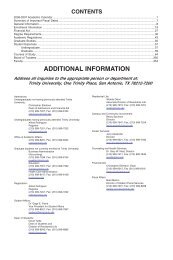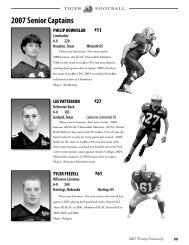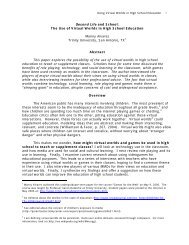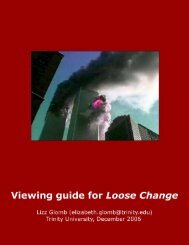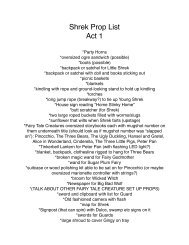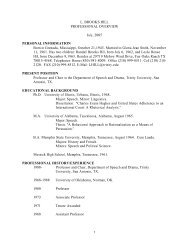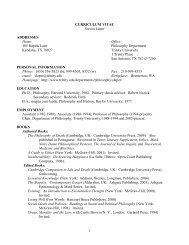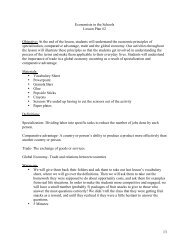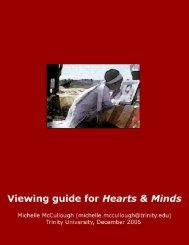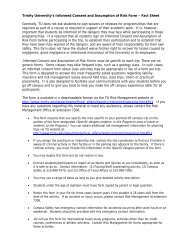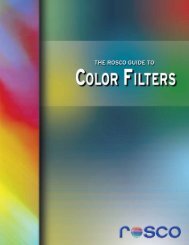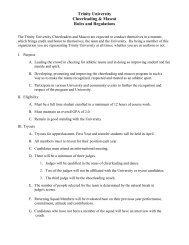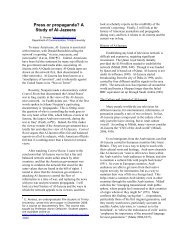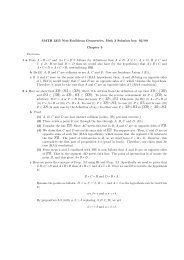Reviews - Trinity University
Reviews - Trinity University
Reviews - Trinity University
Create successful ePaper yourself
Turn your PDF publications into a flip-book with our unique Google optimized e-Paper software.
Huaco-Nuzum<br />
duplicitously placing Marialjefa (Jenny Gago) at the center of<br />
the narrative while depriving her of agency. Her iconographic<br />
image is the epitomized representation of the buena mujer, as<br />
demonstrated when Jose, during Irene’s wedding, advises his<br />
son in-law that “a good wife is the best thing that can happen<br />
to a man in his life.”8 The denotation of “good wife” inevitably<br />
connotes the chaste, subservient, obedient virgin, madre,<br />
sufrida, who echoes Mexican films of the past that showed “que<br />
la mujer mientras mas sufrida mas buena es.” The notion of<br />
the “good wife” is a linguistic remnant of an archaic history<br />
predicated on the subservient mothering of the macho, whose<br />
sexual power is constructed on the powerlessness and chastity<br />
of the mujer sufida.<br />
The representation of the young Maria could have transcended<br />
sufi-ida, but Nava chose to forfeit a representation of<br />
Chicana agency for the madrecita-jefa, unequivocally constructing<br />
Chicana, Latina subjectivity in terms of male desire,<br />
biologically inscribing the Chicana in the role of the maternal.<br />
Terms of domination do not necessarily have to be articulated<br />
or overtly expressed for a narrative to be patriarchal: they<br />
are often woven into the fabric of a narrative that at first glance<br />
appears to represent a powerful female but later reveals her<br />
power as a sham. This is precisely the case with the character<br />
of Maria whose jefa status is an illusion. Contextualized<br />
as the mother, she symbolizes the Virgin dethroned of authority<br />
and ensconced in a niche of motherhood from which she<br />
wields a transparent wand of power contained and constructed<br />
in terms of male desire. For as long as Maria, the jefa, remains<br />
the representation of the buena mujer, her sexuality poses no<br />
threat to the males in the family. The trope of the buena mujer<br />
unavoidably reinforces the traditional patriarchal values of<br />
Chicana, Latina disempowerment, which relegate her to the<br />
restrictive space of the private and constitute “woman’s work<br />
as the only locus from which to express personal desire.<br />
A pervasive intertextual theme of sexual anxiety surfaces<br />
in Mi Familia on the part of male characters who demonstrate<br />
concern about Toni’s sexuality and what they interpret as her<br />
“unnatural” lack of interest in men. Object of the male gaze,<br />
Toni’s sexuality becomes an issue early in the film. Although<br />
Toni is not represented as the classic femme fatale of film noir,<br />
her iconography is that of the sexual (her low-cut gown, painted<br />
face, the close-up of her mouth, and so on). This representation<br />
evokes anxiety on the part of the male characters who,<br />
144



